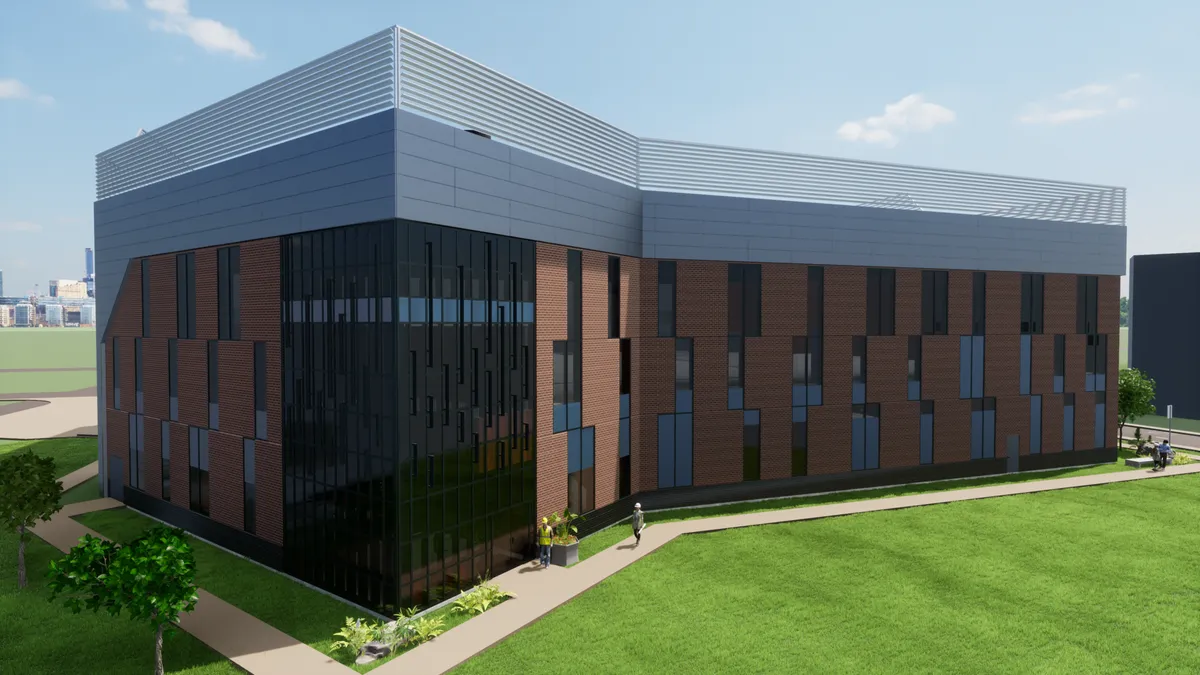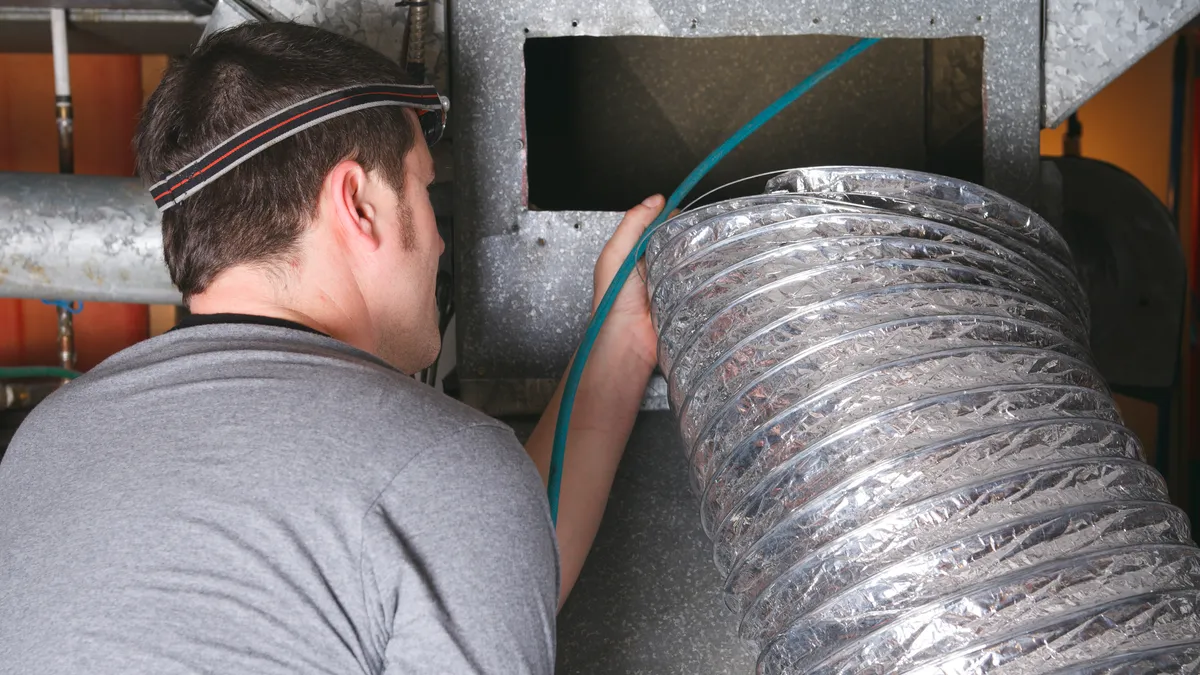Dive Brief:
- Henry Ford Health plans to heat and cool its new Detroit hospital facilities with electricity, using an energy hub as part of an ongoing development project at the health system’s facilities.
- To provide electric heating and cooling, the Central Energy Hub will use a hot and cold water pump system that will tie into the hospital’s facilities, according to a news release issued last week. The hub will be developed and operated by Henry Ford Health Energy Partners, led by Kiewit Development Co., Kiewit Power Constructors Co. and Veolia Energy Operating Services, the health system said.
- The construction of the Central Energy Hub is being integrated with the rest of the development, which a spokesperson for the healthcare organization described as a “major and transformational expansion” of its century-old hospital campus in the state. The development includes 1.2 million square feet of hospital space, 200,000 square feet for a shared services building and a 1,500-space parking garage, said Jerry Darby, vice president of campus planning, development and design at Henry Ford Health.
Dive Insight:
The Central Energy Hub integration is part of the healthcare organization’s broader commitment to reach net-zero emissions by 2050, the spokesperson for Henry Ford Health said in an email. The health system was one of the entities that joined the Health Sector Climate Pledge launched by the U.S. Department of Health and Human Services to encourage private sector healthcare organizations to voluntarily commit to halving their greenhouse gas emissions by 2030 and reaching net-zero emissions by 2050.
“By the end of this year, we plan to start reporting scope 1 and scope 2 emissions, which will track our progress towards our initial goal of cutting our emissions in half by 2030,” Darby said.
The four-story 30,000-square-foot Central Energy Hub is being built on the southwest corner of the Destination: Grand development site on West Grand Boulevard in Detroit, per the release. The hub and the facilities it serves will work toward generating zero fossil fuels or emissions by 2050, the organization said.
Natural gas, including that in wells, storage tanks, gathering lines and processing facilities, is the biggest industrial source of emissions of volatile organic compounds, which contribute to ground-level ozone or smog, according to the U.S. Environmental Protection Agency. These VOC emissions include air toxics like benzene, ethylbenzene and n-hexane, which are suspected to cause cancer and other serious health effects, the EPA says.
The Central Energy Hub’s capabilities will allow the system to limit and eventually fully avoid natural gas use in the facilities, allowing the organization to meet its 2050 target, per the release. For now, the hub will provide heating and cooling only for the new facilities built through the Destination: Grand development, with the rest of the campus’s transition to electric systems set to occur in future phases, Henry Ford Health said.
Total construction of the hub is estimated to cost $235 million as part of a $2.2 billion budget for Destination: Grand, with work on the facility expected to begin in late 2024. The energy hub is expected to be completed in the spring of 2027, per the release.
“With our innovative plans for the Central Energy Hub to eventually cool and heat our new facilities, as well as the unique way in which we financed and will execute the project, we hope to be a holistic model for other health systems who are looking to make a significant impact in sustainability,” Darby said.
“An energy concessionaire request for proposal process really allowed us to bring some of the best engineering and construction minds together to figure out how to optimize design, functionality and affordability,” he added.














